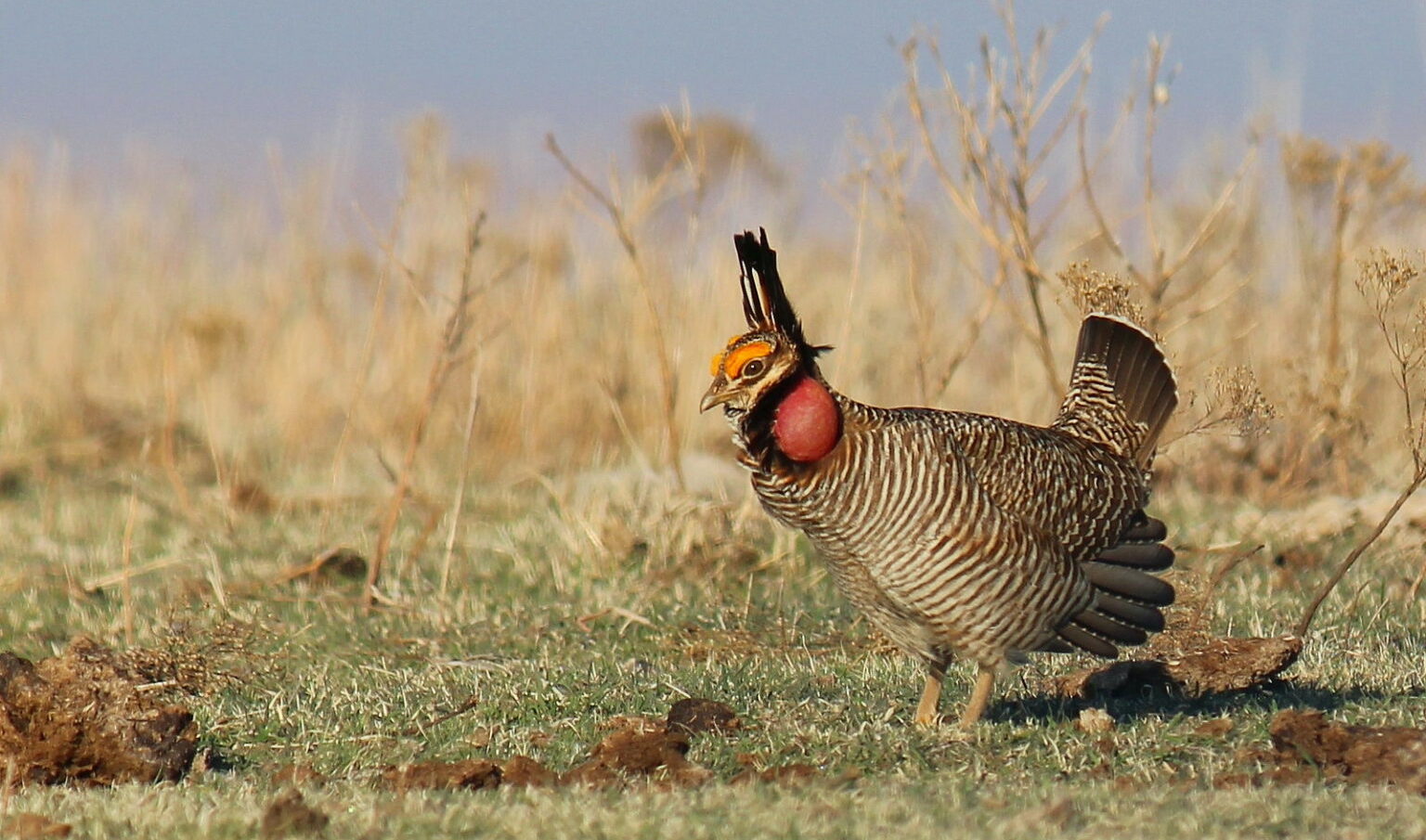Venturing into the habitat of the elusive lesser prairie chicken is no ordinary task. It involves a stealthy entrance into a rebar-fortified bird blind as early as 5:30 a.m. One must freeze in place as the sun rises, witnessing the mesmerizing sight of these birds engaging in their age-old mating dance.
But for any lesser prairie chicken that manages to make it to the lek — an area where mates are sought and won — the odds of survival are already stacked against them. Threatened by dwindling habitats and political moves to strip away protections, these birds are fighting a battle for their existence.
In late 2022, the U.S. Fish and Wildlife Service listed the lesser prairie chicken as threatened in Kansas, estimating that 90% of their once-abundant grassland habitats had disappeared. With attempts underway in multiple states to challenge this listing, the future of these birds hangs in the balance.
Jackie Augustine, Executive Director of Audubon of Kansas, paints a bleak picture of the situation. She estimates that in 2022, there were only around 26,591 lesser prairie chickens in the U.S., with Kansas hosting 75% of them. Augustine emphasizes the symbolic importance of these birds, representing the essence of the prairie landscape.
Despite efforts to conserve them, challenges abound at every stage of a lesser prairie chicken’s life. From habitat destruction to predators and the annual prairie burning, these birds face numerous threats to their survival. Augustine points out that their resilience hinges on having sufficient grasslands, the very habitat that is rapidly disappearing.
Political turmoil further exacerbates the situation. In 2023, Kansas joined Texas and Oklahoma in a lawsuit to challenge the bird’s endangered species listing, while Congress attempted to overturn the listing through legislative means. The fate of the lesser prairie chicken is entangled in legal battles and debates over land use.
Yet, hope remains. Conservation efforts, such as conservation banking, offer a glimmer of possibility. By compensating ranchers for maintaining habitat, there’s a chance to reverse the decline of these birds and preserve the prairie ecosystem for future generations.
For Augustine, the urgency of the situation is palpable. She reflects on the uncertainty of the future, hoping to inspire others to appreciate these birds while they still can. As the lesser prairie chicken teeters on the brink of extinction, it serves as a stark reminder of the fragility of our natural world and the urgent need for conservation action.















































